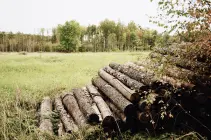This concept is transcendental in that "it is considered an integral process that includes the systematic collection, analysis and dissemination of forest-related data, and the derivation of information and knowledge at regular intervals to enable monitoring of changes over time. It focuses on national-level data and information on forests and trees outside forests, their condition, values, and uses.
There are needs at the national level - which need to be met - that are under land information, for the surface of the forests must be taken care of; it is of vital importance to make a mark to preserve and conserve biodiversity, so it should be a law for all, also to inhibit the ecosystem services that the ecosystem offers us: tree felling, their leaves, pollen because the abrupt overuse of this affects all of us!... Information on carbon stock changes, socio-economic aspects, governance, and other general land use issues have become fundamental to national planning.
Now we will talk about one of the main actors involved in this whole monitoring issue, they are the ones who must take charge of meeting the growing demand for empirical data on the results of forest management, I mean policymakers and other actors, with this monitoring is done to effectively improve the role of forests in reducing climate change and other key ecosystem services, because the forestry sector is facing information needs with strong vicissitudes, To help ensure that forests contribute to sustainable energy generation and food security, policymakers need more and better data, including information on trends and prospects, and on broader issues such as demand for food, energy and wood fibers, and issues related to employment and rural development.
It is essential to strengthening national capacities to collect, compile and analyze data, as well as to generate and disseminate information tailored to the needs of the public!
That is why the main reason why we must follow up, using forest monitoring, without this, basically the work does not have a logic of parameterization and hierarchization with which to work, if it is not done correctly, it will be a work in vain.
It should be emphasized that the voluntary guidelines have been made possible thanks to the dedication of many individuals and institutions that have contributed their time and expertise during the formulation and revision process, such as:
- IDEAM
It is in charge of collecting and managing scientific and technical information on the ecosystems that are part of the country's environmental heritage (especially those related to forestry resources) and of following up and monitoring the Nation's biophysical resources in terms of their contamination and degradation.
Diagnosis of forest information:
- Availability: Conditions and limitations for its use.
- Methodologies: Different.
- Coverage: Different report coverage and levels of detail.
- Standards: Different standards.
- Data Reliability: Disparity of criteria for data capture and few validation mechanisms and use of multiple field capture formats.
- Information Migration: Low percentage of information migration.
- Related personnel: Fluctuating and high annual numerical disparity.
- Dissemination of information: Need for periodic dissemination of information with feedback at the SINA level.
- Resources: Low availability of personnel, technological tools, and financial resources to operate the system.
- Functions: Overlapping.
- Studies: Replicated with objectives that do not obey regional planning criteria.
- Identification of users and information providers: CARs.
- Institutions: Low role differentiation.
- Institutional Synergy: Nonexistent. IDEAM, Pérez Gómez, 2007
- PMSB
The PMSB was born from the need to articulate, conduct and guide the various efforts of environmental institutions, focused on obtaining knowledge and periodic, permanent and standard information on the country's forest ecosystems.
- SNIF
The National Forest Information System is the computer tool for the assembly and operation of the information system of the forest monitoring program. It provides for the capture, analysis, processing, and dissemination of information on the USE AND MANAGEMENT of forest ecosystems with quality, transparency, objectivity, and efficiency of public institutions that generate forest information in Colombia.
Objectives and scope of national forest monitoring.
- The objective of national forest monitoring is to generate a reliable database and information for:
- Support the formulation, monitoring, and adjustment of national and subnational policies related to forests and forest lands, which increasingly include socioeconomic and development policies.
- Inform citizens and other stakeholders (including forest owners and inhabitants, environmental NGOs, forest industries, research organizations, academic institutions, etc.) about the status and development of forests and their multiple characteristics and services at the national level.
- Facilitate discussions and development of international agreements and prepare periodic reports for international conventions and processes, following their requirements for signatory nations, through predefined questionnaires.
- Provide baseline data to measure progress towards sustainable forest management.
Source consulted:
https://www.wavespartnership.org/sites/waves/files/documents/WAVES_Programa-de- MonitoreoySeguimiento-a-los-Bosquesy%C3%A1reas-forestales-PMSB-26%20sep.pdf
http://www.fao.org/3/I6767ES/i6767es.pdf













 Fundación
Fundación